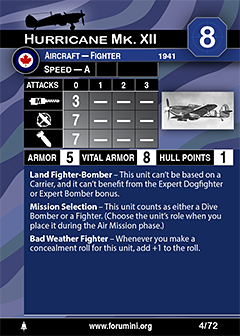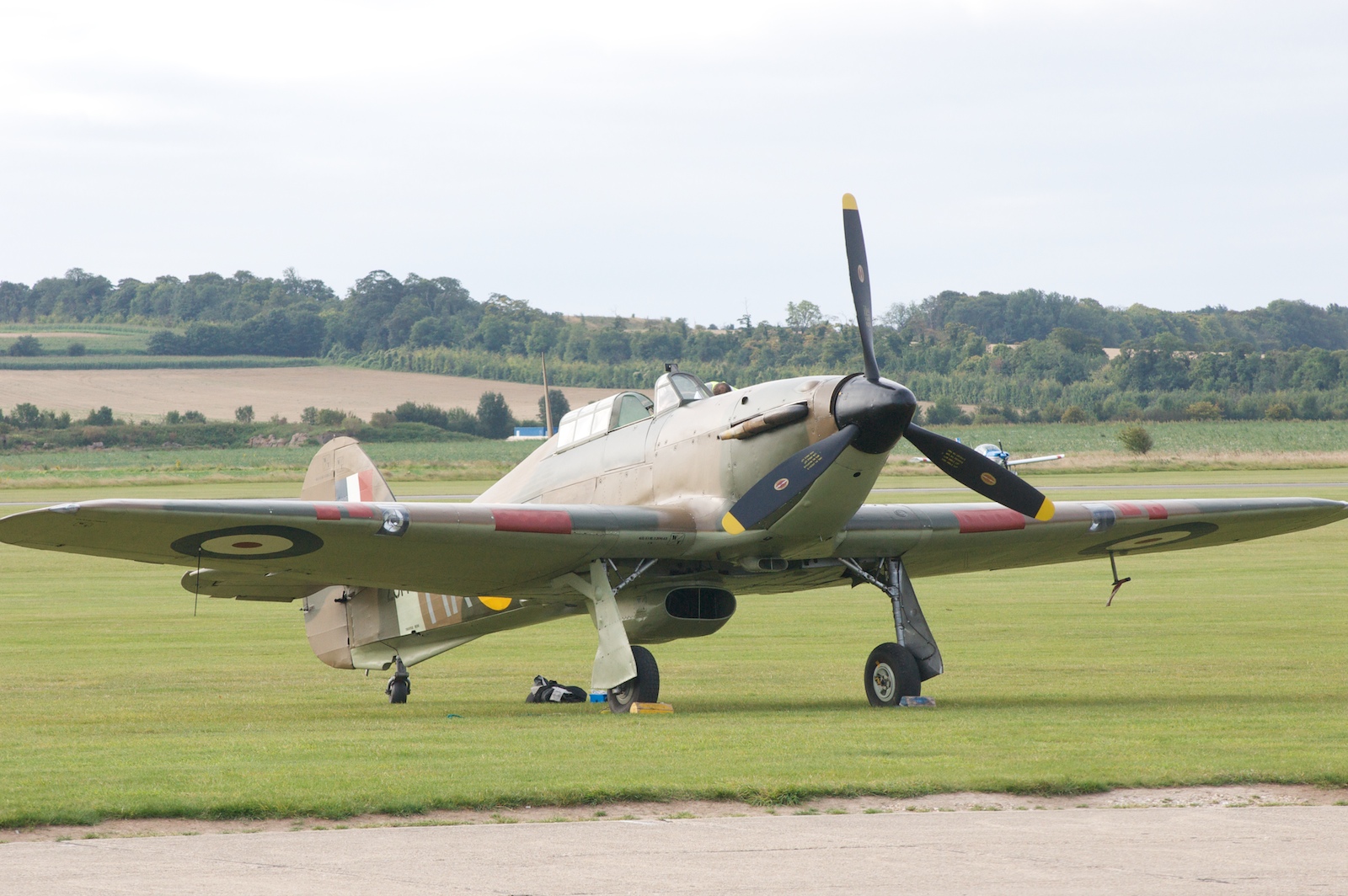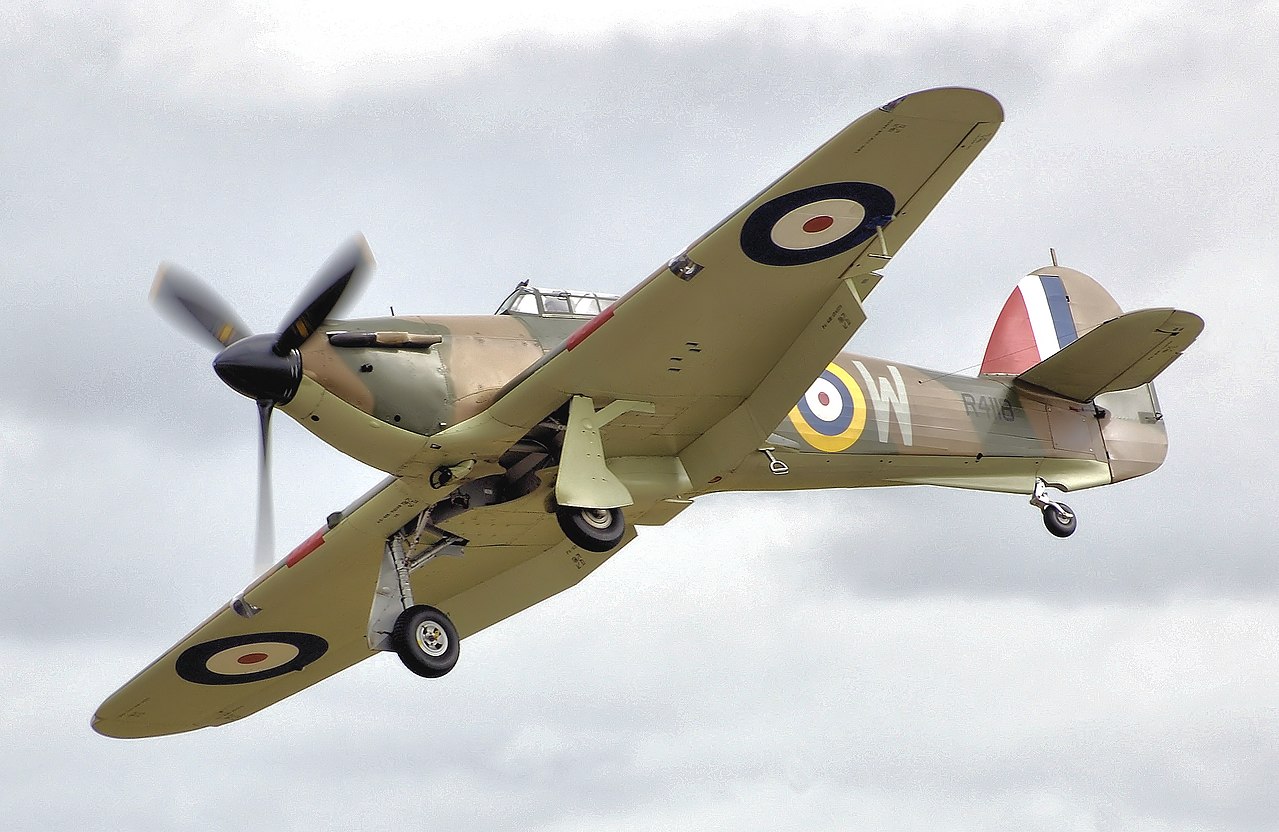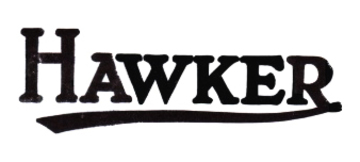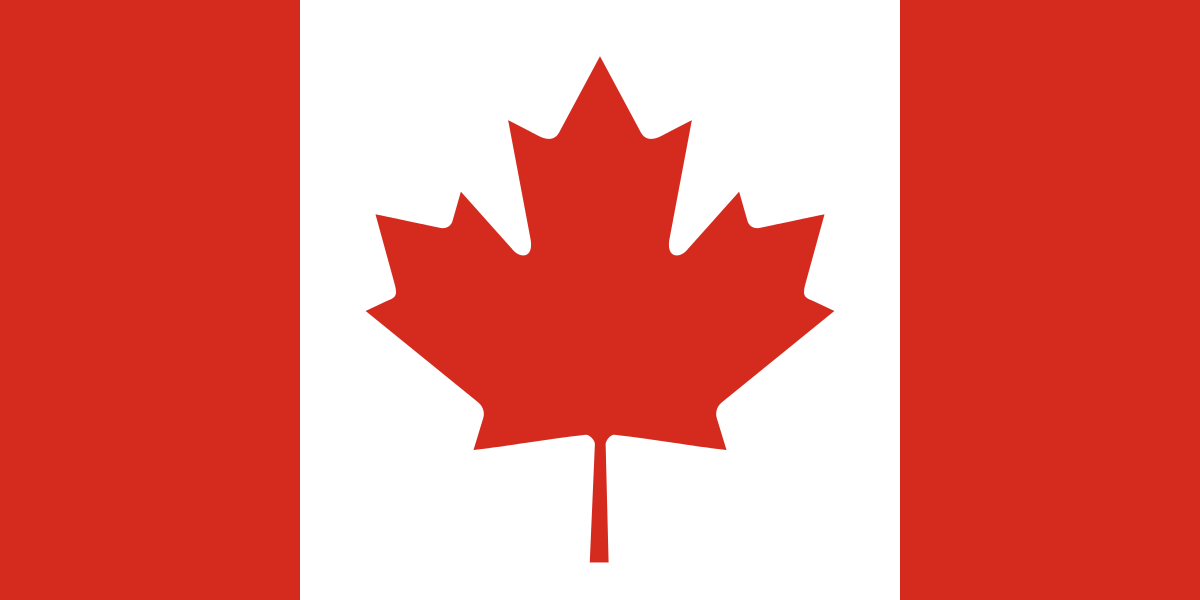Aircraft History: The Hawker Hurricane is a British single-seat fighter aircraft of the 1930s–40s that was designed and predominantly built by Hawker Aircraft Ltd. for service with the Royal Air Force (RAF). It was overshadowed in the public consciousness by the Supermarine Spitfire's role during Battle of Britain in 1940, but the Hurricane actually inflicted 60 percent of the losses sustained by the Luftwaffe in the engagement, and it went on to fight in all the major theatres of the Second World War.
The Hurricane originated from discussions during the early 1930s between RAF officials and British aircraft designer Sir Sydney Camm on the topic of a proposed monoplane derivative of the Hawker Fury biplane. There was an institutional preference at the time for biplanes and a lack of interest from the Air Ministry, but Hawker chose to continue refining their monoplane proposal, which resulted in the incorporation of several innovations which became critical to wartime fighter aircraft, including a retractable undercarriage and a more powerful engine in the form of the newly developed Rolls-Royce Merlin. The Air Ministry placed an order for Hawker's Interceptor Monoplane in late 1934, and the prototype Hurricane K5083 performed its maiden flight on 6 November 1935.
In June 1936, the Hurricane was ordered into production by the Air Ministry; it entered squadron service on 25 December 1937. The manufacture and maintenance of the aircraft was eased by its use of conventional construction methods which enabled squadrons to perform many major repairs themselves without external support. The Hurricane was rapidly procured prior to the outbreak of the Second World War in September 1939, when the RAF had 18 Hurricane-equipped squadrons in service. The aircraft was relied upon to defend against the numerous and varied German aircraft operated by the Luftwaffe, including dogfighting with the capable Messerschmitt Bf 109 in multiple theatres of action.
The Hurricane developed through several versions, as bomber-interceptors, fighter-bombers, and ground support aircraft in addition to fighters. Versions designed for the Royal Navy were popularly known as the Sea Hurricane, with modifications enabling their operation from ships. Some were converted to be used as catapult-launched convoy escorts. By the end of production in July 1944, 14,487 Hurricanes had been completed in Britain and Canada.
The Hurricane originated from discussions during the early 1930s between RAF officials and British aircraft designer Sir Sydney Camm on the topic of a proposed monoplane derivative of the Hawker Fury biplane. There was an institutional preference at the time for biplanes and a lack of interest from the Air Ministry, but Hawker chose to continue refining their monoplane proposal, which resulted in the incorporation of several innovations which became critical to wartime fighter aircraft, including a retractable undercarriage and a more powerful engine in the form of the newly developed Rolls-Royce Merlin. The Air Ministry placed an order for Hawker's Interceptor Monoplane in late 1934, and the prototype Hurricane K5083 performed its maiden flight on 6 November 1935.
In June 1936, the Hurricane was ordered into production by the Air Ministry; it entered squadron service on 25 December 1937. The manufacture and maintenance of the aircraft was eased by its use of conventional construction methods which enabled squadrons to perform many major repairs themselves without external support. The Hurricane was rapidly procured prior to the outbreak of the Second World War in September 1939, when the RAF had 18 Hurricane-equipped squadrons in service. The aircraft was relied upon to defend against the numerous and varied German aircraft operated by the Luftwaffe, including dogfighting with the capable Messerschmitt Bf 109 in multiple theatres of action.
The Hurricane developed through several versions, as bomber-interceptors, fighter-bombers, and ground support aircraft in addition to fighters. Versions designed for the Royal Navy were popularly known as the Sea Hurricane, with modifications enabling their operation from ships. Some were converted to be used as catapult-launched convoy escorts. By the end of production in July 1944, 14,487 Hurricanes had been completed in Britain and Canada.
Manufacturer: Hawker had its roots in the aftermath of the First World War, which resulted in the bankruptcy of the Sopwith Aviation Company. Sopwith test pilot Harry Hawker and three others, including Thomas Sopwith, bought the assets of Sopwith and formed H.G. Hawker Engineering in 1920.
In 1933 the company was renamed Hawker Aircraft Limited, and it took advantage of the Great Depression and a strong financial position to purchase the Gloster Aircraft Company in 1934. The next year it merged with the engine and automotive company Armstrong Siddeley and its subsidiary, Armstrong Whitworth Aircraft, to form Hawker Siddeley Aircraft. This group also encompassed A. V. Roe and Company (Avro).
Hawker Aircraft continued to produce designs under its own name as part of Hawker Siddeley Aircraft, from 1955 a division of Hawker Siddeley Group. The "Hawker" brand name was dropped, along with those of the sister companies, in 1963; the Hawker P.1127 was the last aircraft to carry the brand.
The Hawker legacy was maintained by the American company Raytheon who produced business jets (including some derived from the 125, whose original design dated back to de Havilland days) under the "Hawker" name. This was the result of purchasing British Aerospace's product line in 1993. The name was also used by Hawker Beechcraft after Raytheon's business jet interests (Hawker and Beechcraft) were acquired by investors and merged.
In 1933 the company was renamed Hawker Aircraft Limited, and it took advantage of the Great Depression and a strong financial position to purchase the Gloster Aircraft Company in 1934. The next year it merged with the engine and automotive company Armstrong Siddeley and its subsidiary, Armstrong Whitworth Aircraft, to form Hawker Siddeley Aircraft. This group also encompassed A. V. Roe and Company (Avro).
Hawker Aircraft continued to produce designs under its own name as part of Hawker Siddeley Aircraft, from 1955 a division of Hawker Siddeley Group. The "Hawker" brand name was dropped, along with those of the sister companies, in 1963; the Hawker P.1127 was the last aircraft to carry the brand.
The Hawker legacy was maintained by the American company Raytheon who produced business jets (including some derived from the 125, whose original design dated back to de Havilland days) under the "Hawker" name. This was the result of purchasing British Aerospace's product line in 1993. The name was also used by Hawker Beechcraft after Raytheon's business jet interests (Hawker and Beechcraft) were acquired by investors and merged.
Country: Canada is a North American country stretching from the U.S. in the south to the Arctic Circle in the north. Major cities include massive Toronto, west coast film centre Vancouver, French-speaking Montréal and Québec City, and capital city Ottawa. Canada's vast swaths of wilderness include lake-filled Banff National Park in the Rocky Mountains. It's also home to Niagara Falls, a famous group of massive waterfalls.
Item created by: gdm on 2017-01-09 08:27:56. Last edited by gdm on 2019-09-29 12:13:33
If you see errors or missing data in this entry, please feel free to log in and edit it. Anyone with a Gmail account can log in instantly.
If you see errors or missing data in this entry, please feel free to log in and edit it. Anyone with a Gmail account can log in instantly.


